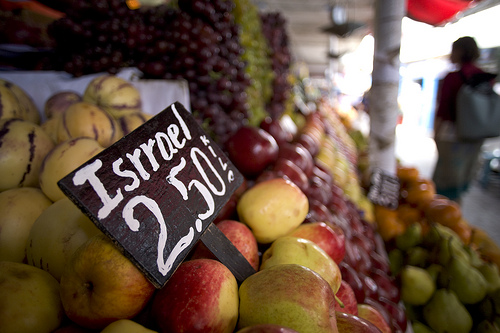Have you ever checked out the nutrition information on the back of your favorite cycling snacks? Too many commercial foods are loaded with calories from sugar, salt, and fat, and packed with chemicals to enhance flavor and prolong shelf life. When you’re riding hard you need to eat, but prepackaged foods aren’t always the best option.
Whether you’re out for a couple hours of fun riding or taking on a century, fuel up with these natural alternatives. They’ll sustain your energy, maintain your focus, and—bonus—you won’t be left with non-decomposable foil wrappers in your jersey pocket.
FARMER’S MARKET MAGIC
Mother Nature has already provided athletes with awesome value-packed nutrition in snack-sized packages. Bananas are a popular cycling snack for a reason: they’re chock full of glucose, fructose, water, and potassium, and they travel easily. Sliced apples, orange wedges, and dates all makes great on-the-road snacks as well, since their low glycemic index score means they provide sustained energy rather than blood sugar spikes.
Sweet potatoes are another fantastic source of energy for cyclists—they’re packed with beta-carotene (which aids recovery), fiber, and essential minerals like potassium, manganese, and vitamin A.
Taking them out on the road requires just a few minutes of preparation. Slice one large sweet potato (with the skin still on), spread the slices over a baking sheet, give them a quick dash of salt, and then bake for about 35 minutes at 250 degrees. The goal is to dry them into convenient, chewy snacks that are easy to carry.
HYDRATION
If those commercials with athletes dripping beads of Gatorade weren’t enough to turn you off of sports drinks already, check out the labels. The 90 calories in Gatorade’s G Series Thirst Quencher come mainly from its 21 grams of sugar. According to the American Heart Association, that’s 80% of your recommended sugar intake for the day.
Skip the artificially dyed and flavored sports drinks and go for plain water. It’s just as hydrating as the sports drinks, but without the extra calories and chemicals. Dissolvable tablets like Nuun are a great way to add minerals, salts, and flavor to your water without all the extra stuff—one 16-oz bottle of Nuun-enhanced water has only 6 calories, and no sugar. For more information on hydration, see our Hydration Station article.
ALTERNATIVES TO GELS AND ENERGY BARS
Colorful packets of energy gels, bars, and chews may make great end caps and register displays in sports stores, but many are packed with chemicals and sugar—not to mention expensive.
Take granola bars, that staple hunger-quenching snack. After checking the label on a Clif Bar and finding it had 23 grams of sugar, I began experimenting with making my own granola bars. The upside is that they’re incredibly easy to make, and can save you tons of money over buying individually-wrapped granola bars at a dollar a pop.
My basic recipe is posted on my blog. It’s easy to modify, inexpensive, delicious, and best of all you know exactly what’s in it because you put it there yourself.
Energy gels can be great for giving you a quick boost, but they can be pricey. Try this recipe for making your own, then pour it into a nutrition flask like this one from Hammer. It’s a great way to cut down on waste, too.
POST-RIDE RECOVERY
After a long ride, your muscles need protein and carbs, and your glycogen stores need to be restocked with good sugars. Chocolate milk and rejuvenating smoothies can do wonders to help your body recover, and they’re delicious to boot.
Have you been following our Watermelon Recovery series? Check out the minted watermelon shake or a watermelon recovery smoothie for some delicious, all-natural recovery drinks.
WHAT’S YOUR FLAVOR
What are your favorite alternatives to packaged cycling snacks? Sound off in the comments below.
Jessie Kwak is a writer who loves to type about the good life: travel, outdoor adventures, food and drink, and (of course) cycling. You can find her at Bictoro: Bikes and Crafts.


Just a note, the Hammer bottle is no longer available on the REI website..